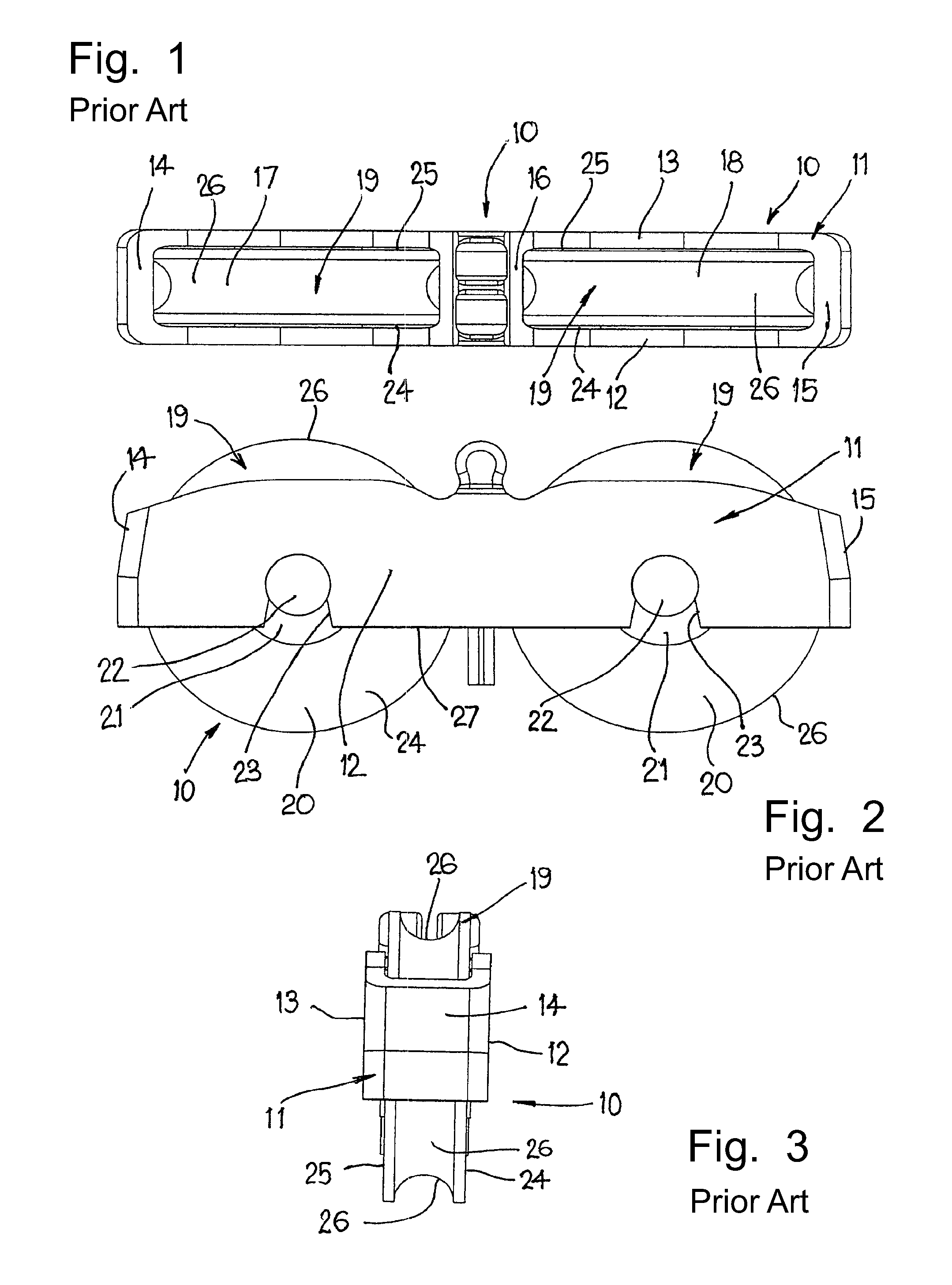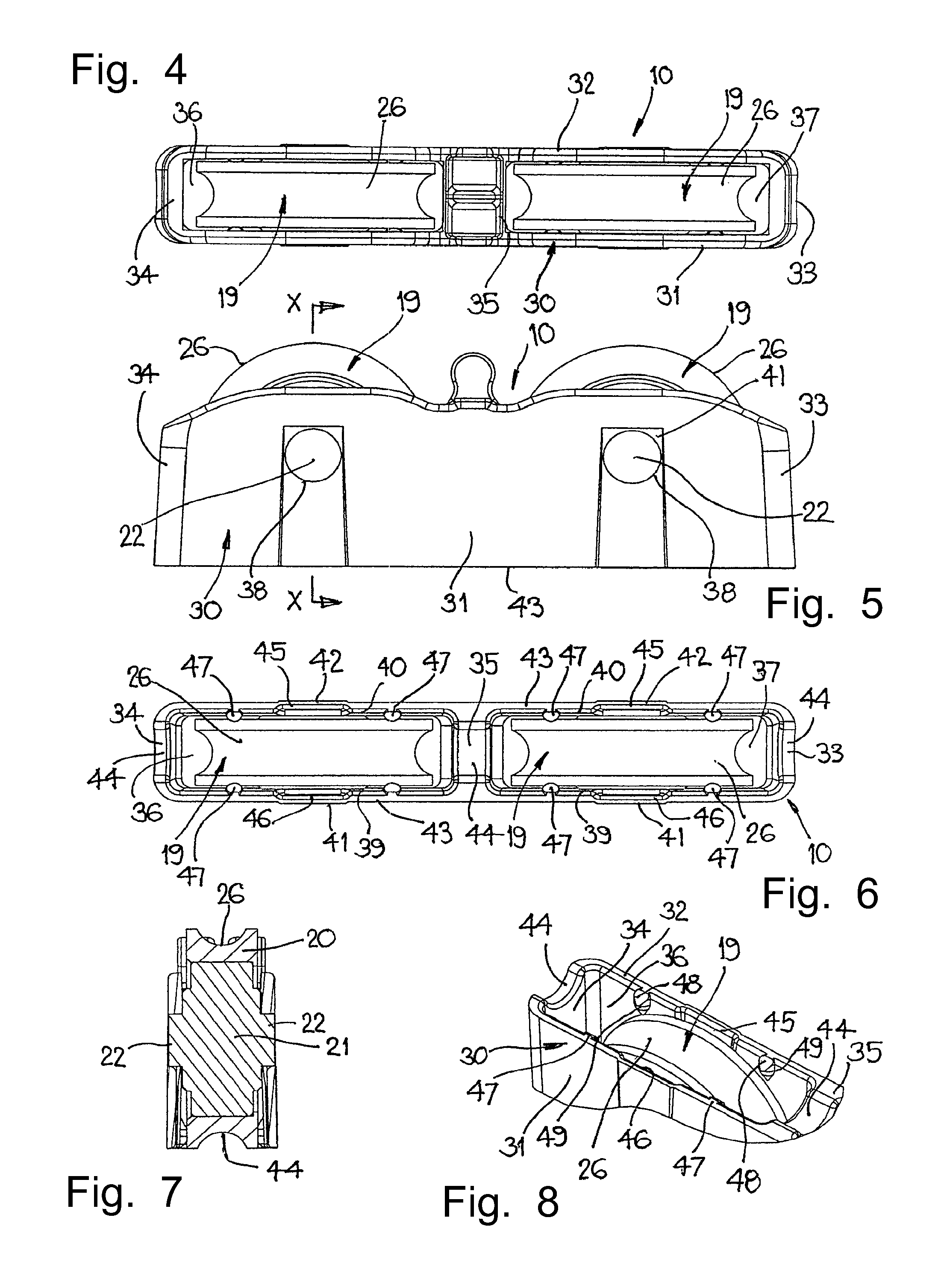Roller support assemblies
a technology for supporting assemblies and rollers, which is applied in the direction of transportation and packaging, manufacturing tools, wing accessories, etc., can solve the problems of significant risk of causing damage to the peripheral rim of the roller, and the service life is reduced, so as to minimize or prevent damage to the roller during installation, and improve the performance of the assembly once installed.
- Summary
- Abstract
- Description
- Claims
- Application Information
AI Technical Summary
Benefits of technology
Problems solved by technology
Method used
Image
Examples
Embodiment Construction
[0023]Referring first to FIGS. 1 to 3, there is shown a bogie arrangement 10 usable in a roller support assembly of the general type described and illustrated in Australian Patent Specification No. 779340. The prior art assembly comprises a housing member 11 with a pair of spaced side walls 12, 13, a pair of transverse end walls 14, 15 integrally formed with and interconnecting the side walls 12, 13 and an intermediate transverse wall 16 dividing the space within the housing member 11 into two roller receiving zones 17, 18, each having a roller assembly 19 mounted therein. Each roller assembly 19 includes a roller body 20, a shaft 21 with stub shaft parts 22 extending laterally from side faces 24, 25 of the roller body 20. The roller body has a peripheral rim 26 formed as a groove so as to be cooperable, in use, with a linear guide track (not shown). The roller body 20 is rotationally mounted on the shaft 21 and each roller assembly 19 is secured to the housing member 11 by snap fit...
PUM
 Login to View More
Login to View More Abstract
Description
Claims
Application Information
 Login to View More
Login to View More - R&D
- Intellectual Property
- Life Sciences
- Materials
- Tech Scout
- Unparalleled Data Quality
- Higher Quality Content
- 60% Fewer Hallucinations
Browse by: Latest US Patents, China's latest patents, Technical Efficacy Thesaurus, Application Domain, Technology Topic, Popular Technical Reports.
© 2025 PatSnap. All rights reserved.Legal|Privacy policy|Modern Slavery Act Transparency Statement|Sitemap|About US| Contact US: help@patsnap.com



